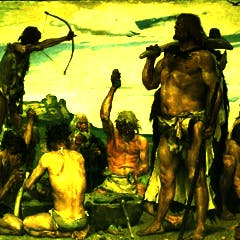
Articles on Archaeology
Displaying 61 - 80 of 487 articles

Ancient microbes likely produced natural products their descendants today do not. Tapping into this lost chemical diversity could offer a potential source of new drugs.

A way to recover the owner’s DNA from ancient artefacts will help archaeologists understand past societies in more detail than ever before.

Scientists had figured a fossil found in Spain more than a century ago was from a Neandertal. But a new analysis suggests it could be from a lost lineage of our species, Homo sapiens.

The genetic study challenges previous theories about the origins and culture of the Picts.

Researchers looked at the skeletal remains of 40 people, and found evidence of dairy consumption across a wide swathe of early Tibetan society.

From Aristotle to Darwin, inaccurate and biased narratives in science not only reproduce these biases in future generations but also perpetuate the discrimination they are used to justify.

Hunter-gatherers were an important part of the development of the Mapungubwe Kingdom in southern Africa – a fact that history has tended to neglect.

European colonists chronicled their version of how Indigenous peoples lived with horses. New collaborative research adds scientific detail to Indigenous narratives that tell a different story.

The first ancient DNA sequences from peoples of the medieval Swahili civilization push aside colonialist stories and reveal genetic connections from the past.

Since 2011, professional and amateur archaeologists in Cardiff have been unearthing prehistoric artefacts. But last summer, they began to discover something even more extraordinary.

The discovery of the oldest recorded mention of the Norse god Odin pushes the age of this deity back at least 150 years.

The rectangular stone structures known as mustatils were used thousands of years ago for sacrificing animals to an unknown deity – perhaps in response to ancient climate change.

The Colchester vase contains the remains a male of about 40 years of age and not of local origin. Could he have been a gladiator?

In 2022 we detailed the discovery of 1,500 stone points in France’s Madrin cave. Experiments now show that they could were used as arrowheads, pushing back evidence of archery in Eurasia by 40,000 years.

We uncovered evidence of a rebellion so significant, that events such as Cleopatra’s affairs and the rise of Christianity may not have come to pass without it.

Several studies have upended what we thought we knew about mummification using scientific dating techniques to reveal some fascinating – and surprising – insights.

Changes in southern African rock art reflect the mixing of groups of people after they came into contact with each other.

There would have been plenty of time during the long, dark, Northern nights for ancient Roman shoemakers to indulge in side hustles.

The findings suggest we weren’t the first advanced carnivore among the hominins, as has been previously assumed.

The medicine container was found in a painted rock shelter. A radio carbon date of the horn container places it at around AD 1461-1630.
